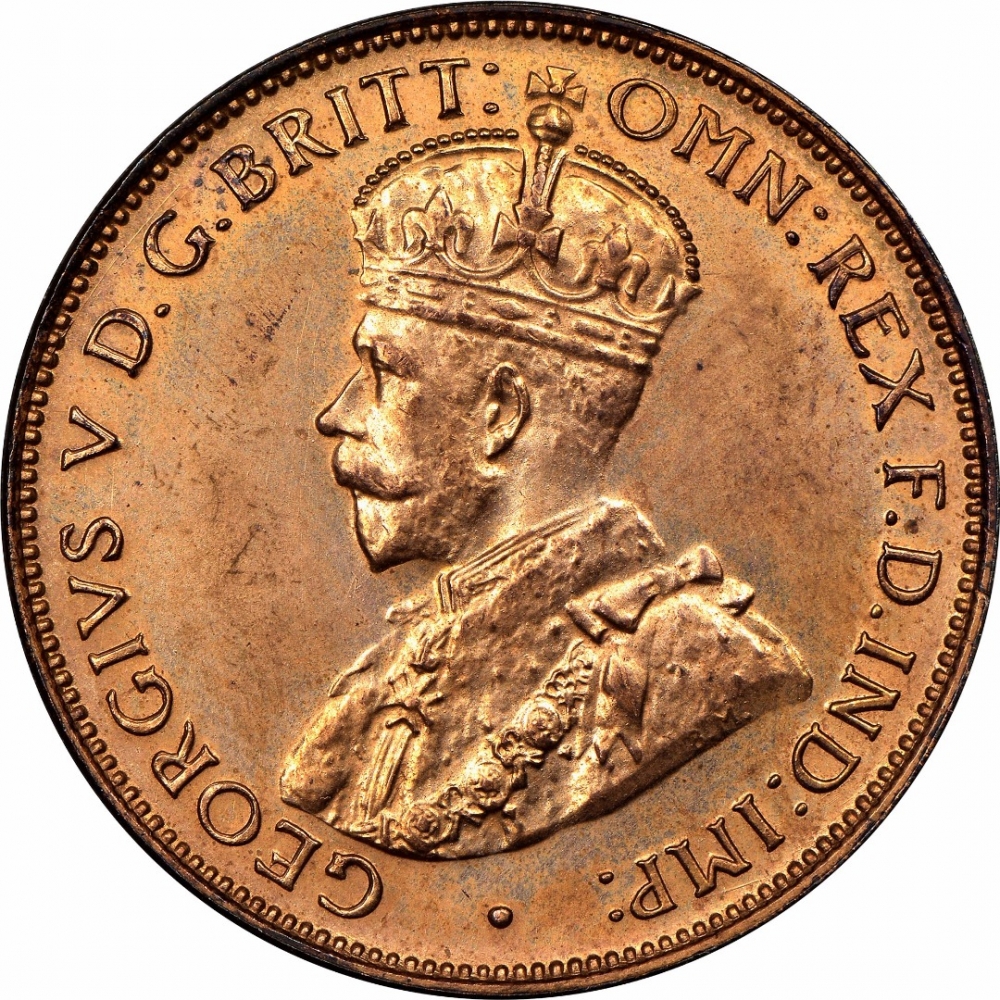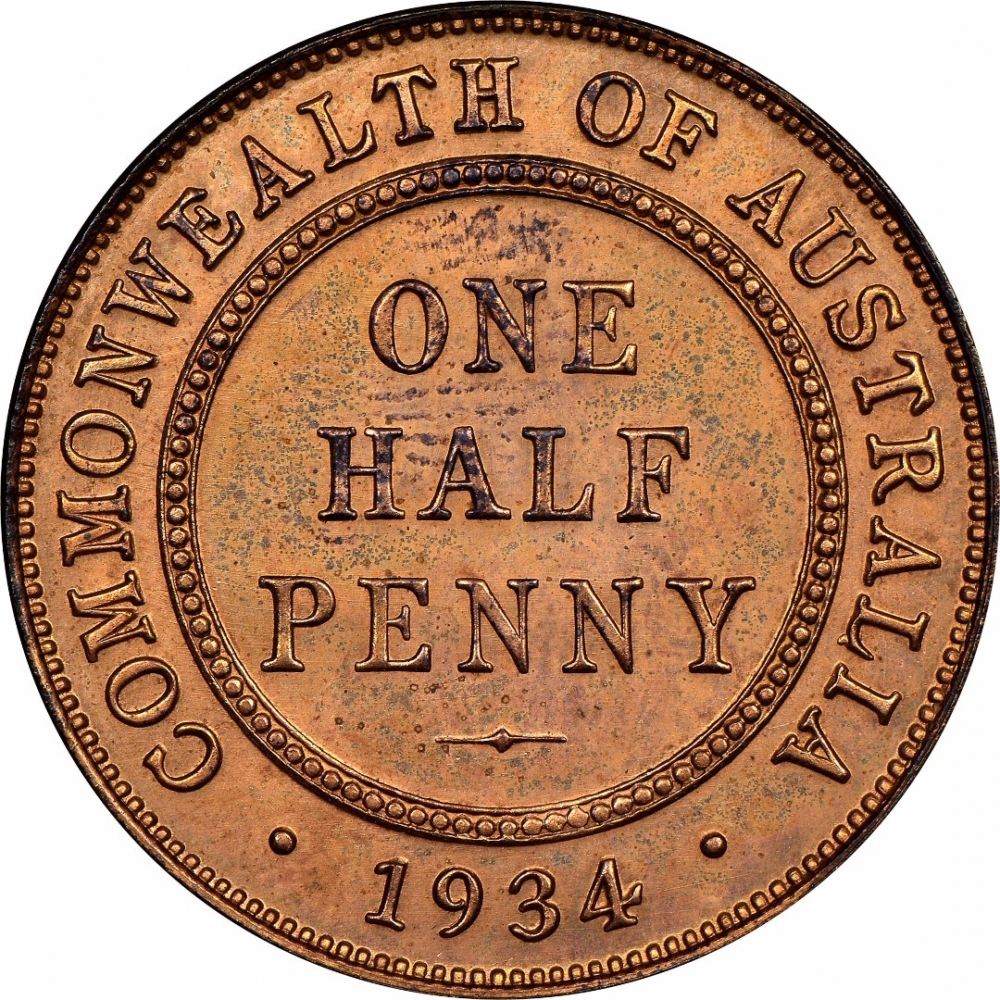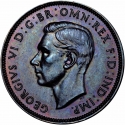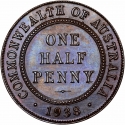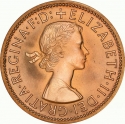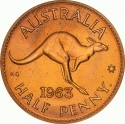You are about to finish your registration. Please check your mailbox (including spam folder). There should be a letter with a confirmation link. Check setting to make sure that your e-mail address is correct.
Send letter againDescription
George V (1865–1936) was King of the United Kingdom and the British Dominions, and Emperor of India, from 6 May 1910 until his death in 1936. He was the only Emperor of India to be present at his own Delhi Durbar. His reign saw the rise of socialism, communism, fascism, Irish republicanism, and the Indian independence movement, all of which radically changed the political landscape. In 1917, George became the first monarch of the House of Windsor, which he renamed from the House of Saxe-Coburg and Gotha as a result of anti-German public sentiment.
Without mintmarks: Melbourne and/or Sydney Mint
Obverse

|
Crowned and robed bust of George V facing left; below bust in small lettering the artist's initials B.M. GEORGIVS V D.G.BRITT: OMN:REX F.D.IND:IMP: • |
|---|---|
Reverse

|
Denomination (and mintmark where present) within three circles (middle circle beaded). Lettering around outside, date below within dots. COMMONWEALTH OF AUSTRALIA |
| Edge |
